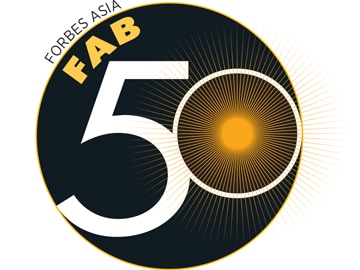
Fab 50: The best blue-chips of Asia Pacific
Forbes Asia's list of the best publicly traded big companies
Each year, our Fabulous 50 list identifies the corporate stars of the Asia-Pacific region. This year, one company outshines the others, and it wasn’t even eligible for the list until this year. Meeting the requirement of being publicly traded for at least a year, Alibaba not only joins the roster in its first attempt but boasts the highest market value of any of the 50 companies and outperforms on a range of other metrics. Last year’s most valuable company, Tencent, is now second.
Some 22 companies from China met the bar, more than any other country for the sixth year in a row, but down from the 25 that made it last year. India is second with 8 companies, slipping from 10 a year ago. South Korea is third with 5, one more than in 2015. But the big news is Vietnam. It’s never placed a company in the Fab 50, but this year, Vietnam Dairy Products breaks the ice.
This marks the 12th edition of the Fab 50, and a glance at the 272 companies that have turned up on the list at least once shows the changing nature of business in the region. Back in 2005, five wireless telecom companies made the list. This year there are none. Some 11 tech hardware companies were represented on that first list, but there were never that many again; this year there are 6. On the other hand, no property developers joined the roster in the first three years, but they’ve been well-represented ever since.
To arrive at 50 companies, we start with a pool of 1,524 public companies that have at least $1.7 billion in annual revenue. (Private companies, such as China’s high-performing Huawei Technologies, are not included.) We then knock out companies that are losing money or whose revenue is less than it was five years ago. Next we toss out companies that have more than 50 percent state-ownership. The goal is to highlight entrepreneurial outfits, not ones living off government connections. Companies carrying a debt ratio higher than 50 percent or that are more than 50 percent-owned by listed parents are also culled. Finally we run the remaining contenders though a battery of more than a dozen financial measures. The goal is an honour roll of high-performing blue-chips, the region’s best of the best.
Reporting by Grace Chung, Rebecca Feng and Anuradha Raghunathan
(This story appears in the 30 November, -0001 issue of Forbes India. To visit our Archives, click here.)





